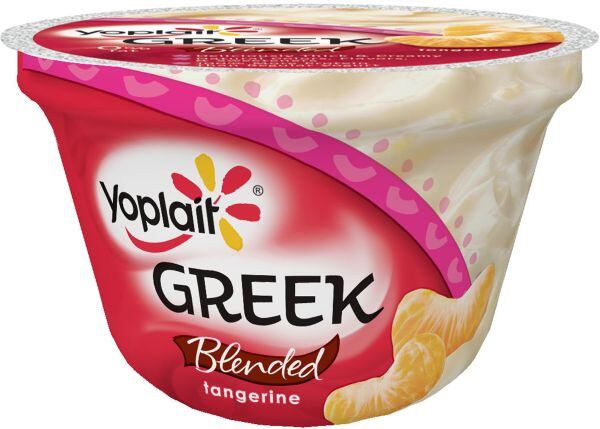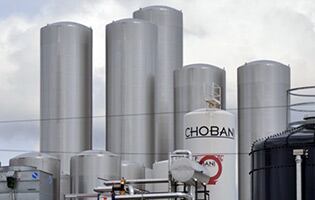For every pound of milk used in traditional Greek yogurt manufacturing processes - where the whey is ‘strained’ (or centrifuged) off - only one-third ends up in the final product.
The remaining liquid - which contains protein, lactose and milk minerals - is often referred to as ‘acid’ whey, which, unlike the ‘sweet’ whey generated in cheese production, is not suitable for use in processed foods, and has created headaches for many manufacturers as it is too acidic to be handled by their on-site waste water treatment facilities.
While much has been made of the environmental threat posed by acid whey, prompting headlines about "toxic waste" and "dead fish", Greek yogurt makers are not permitted to throw acid whey down the drain (just as cheese makers are not allowed to throw sweet whey down the drain), and they typically pay farmers to deal with it (it can be used in some animal feed supplements or as a liquid fertilizer, or fed into biodigesters).
Chobani is installing a reverse osmosis filtration system; Dannon exploring 'nutritional and water uses'
Michael J. Neuwirth, senior director of public relations at Dannon (which owns the Oikos Greek Yogurt brand), told FoodNavigator-USA: “Since we started making Greek yogurt we have sought to use the extracted whey in a sensible and responsible way by agricultural recycling in the form of animal feed, when that is possible. Currently most of our whey is used for animal feed, and the rest is treated in a biodigester.”
But he added: “We have also been exploring additional ways to further improve how we use whey from a nutritional and an environmental perspective because we believe there may be nutritional and water uses for whey that are potentially even better than that of our current use.”
Chobani, meanwhile, is installing a reverse-osmosis filtration system at its plant in Idaho that will enable it to recover water for re-use and concentrate the whey, reducing transport costs.
Finally General Mills has recently installed a biodigestor at its Yoplait Greek plant in Murfreesboro, Tennessee, that "uses self-renewing bacteria to completely eliminate the dairy solids from the flow of waste water by converting the wasted whey into a combustible biogas... that we will use to convert into a significant amount of electricity each year."
Previously, said a spokesman, the whey was "hauled by truck to thousands of acres of agricultural land where it was plowed into the ground".
Arla Food Ingredients technology enables firms to use acid whey in value-added food products
But when it comes to turning acid whey into value-added food ingredients, Arla Foods Ingredients is probably the most advanced, having come up with a method involving its Nutrilac dairy proteins that enables firms to use acid whey in products from fermented beverages and whey drinks to desserts and spreadable cheese (click HERE).
General Mills has also been working on ways to turn acid whey from a cost into a revenue stream, according to three patent applications published on November 27, although its spokesperson would not comment on the commercial viability of any of the ideas referenced.
Gen Mills: ‘Neutralized’ acid whey can be used as a bulking or sweetening agent or to add calcium, phosphorus, to foods
The first patent application- US#20140348993 - describes a method of neutralizing yogurt whey with various substances from potassium hydroxide to sodium bicarbonate to form a “neutralized yogurt whey with a pH of at least 6.0”, then removing the water via filtration, reverse osmosis or evaporation to form a yogurt whey concentrate (liquid or powder) that can be used in a variety of foods.

The neutralized whey, which contains calcium and phosphorus, “can be utilized as a food product bulking agent, sweetening agent and nutrient fortificant”.
The neutralized acid whey can replace sweet whey in food products
The second application - US#20140348981 - expands on this, noting that the neutralized whey can replace sweet whey in many food products, and that there are “no significant sensory differences between 10% weight for weight solutions of dried sweet whey and the neutralized yogurt whey”.
Meanwhile, “the color of neutralized yogurt whey was more similar to sweet whey than whey permeate,” notes General Mills. “Sweet whey and neutralized yogurt whey have similar opacity and whiteness.”
Adding enzyme to yogurt whey converts the lactose and/or galactose into a form of soluble fiber
The third - US#20140348979 outlines a method of adding an enzyme to yogurt whey that converts the lactose and/or galactose in it to galacto-oligosaccharides, soluble fibers that can be incorporated into cereals, baked goods, snack bars, sauces, and fruit snacks, explains General Mills.
“In many embodiments the enzyme is a beta-galactosidase or beta-glycosidase. [But] any suitable enzyme or microorganism known in the art, which can convert lactose to a soluble fiber or oligosaccharide, may be employed in the present methods.”

The soluble fiber created via this process “can be utilized without filtering out protein or minerals or without other purification techniques like chromatography for example,” adds the application.
“The lactose conversion rate can be from about 50% to about 92% depending on the enzyme and conversion process conditions.”
Do all forms of Greek yogurt production generate acid whey?
While purists argue that Greek yogurt should be made via a straining process, which creates an acidic whey by-product, some companies avoid this step and make thick ‘Greek-style’ yogurts by adding whey or milk protein concentrate and thickening agents such as modified food starch or pectin.
But for those who use a straining process, what they do with their acid whey can have a big impact on the bottom line, according to a January 2014 analysis of the New York Greek yogurt market by Robert D. Boynton and Andrew M. Novakovic at Cornell University.
They add: “Land application and animal feeding are not appealing long run solutions for acid whey disposal/use… Breakthroughs in acid whey utilization will be important for Greek yogurt (strained or centrifuged) to continue to grow in the U.S. and further improve overall profitability.
“New technologies or creative application of existing technologies to the further processing of acid whey into food or feed stuffs or as a fuel for energy generation hold promise.”
Those 'toxic' headlines: If you dumped 1,000s of tonnes of tomato juice into a stream, you'd probably kill a lot of fish too
As for those 'toxic waste' headlines about acid whey, which were prompted by an article in Modern Farmer in May 2013,a note penned by Dr Novakovic provides some perspective: "Recent reports have described the whey from Greek yogurt in dire terms, including references that it is toxic.
"[But] Modern Farmer sets up a straw man by saying that if acid whey were dumped into a stream it would kill the fish. That is true. The same would be true if one dumped thousands of gallons of tomato juice into a stream. This is precisely why the food industry doesn't do this, and there are regulations in every state that would severely punish anyone who did, either by accident or purpose."
